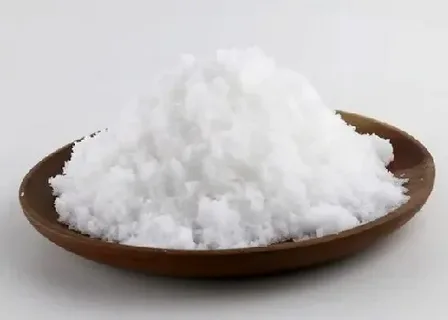-
Nieuws Feed
- EXPLORE
-
Blogs
Mercury Acetate: A Guide to Its Chemistry and Impact

Chemistry is full of compounds that can be both useful and harmful. One such compound is mercury acetate. For many years, it was an important chemical in laboratories and experiments. But because of its toxic effects, its use today is very limited.
This guide explains what mercury acetate is, how it works, where it has been used, and why handling it safely is so important.
Understanding Mercury Acetate
Mercury acetate is a chemical compound that combines mercury, a heavy metal, with acetic acid, the substance found in vinegar. Its formula is Hg(C₂H₃O₂)₂.
It is part of the organomercury family, which means it has both an organic group (from acetic acid) and an inorganic element (mercury). These compounds are known for their reactivity but also for their toxicity.
Chemical Formula and Structure
-
Formula: Hg(C₂H₃O₂)₂
-
Composition: One mercury atom bonded to two acetate groups
-
Form: White or off-white crystals or powder
-
Nature: Strongly toxic and reactive
The simple structure makes mercury acetate an effective reagent in certain chemical reactions, which explains its past popularity in labs.
Main Characteristics
Mercury acetate has several key features:
-
Solubility: Dissolves in water and alcohol
-
Smell: Slight vinegar-like odor
-
Stability: Sensitive to air, light, and high temperatures
-
Toxicity: Dangerous even in small amounts
Because of these characteristics, mercury acetate is not widely used outside of research.
How Mercury Acetate is Produced
Mercury acetate is usually made by reacting mercury oxide (HgO) with acetic acid (CH₃COOH).
The reaction:
HgO + 2CH₃COOH → Hg(C₂H₃O₂)₂ + H₂O
This process is simple for chemists but requires great care because both the starting material and the final product are hazardous.
Role in Science and Industry
Over the years, mercury acetate has been used in different ways:
1. Chemical Reactions
In organic chemistry, mercury acetate was used as a reagent for oxidation and hydration reactions. It helped chemists create alcohols and other compounds.
2. Catalyst
It sometimes served as a catalyst, speeding up reactions that otherwise take longer.
3. Research and Medicine (Historical)
In older medical research, mercury acetate was tested for possible treatments. However, due to high toxicity, it was abandoned.
4. Industrial Applications
Some industries used mercury acetate in processes requiring special chemical changes. Today, safer alternatives have replaced it in most cases.
Risks and Toxicity
The biggest issue with mercury acetate is its danger to human health.
Possible Effects of Exposure:
-
Short-Term: Nausea, vomiting, dizziness, tremors
-
Skin Contact: Burns, rashes, or poisoning through absorption
-
Inhalation: Breathing dust or vapors can damage the lungs and brain
-
Long-Term: Memory loss, kidney damage, nervous system problems
Because mercury accumulates in the body, repeated exposure can have permanent effects.
Environmental Effects
Mercury acetate is also a serious environmental hazard.
-
It can pollute water sources if disposed of carelessly.
-
Fish and other aquatic life can absorb mercury, leading to poisoning.
-
Mercury travels up the food chain, eventually harming humans who eat contaminated seafood.
-
Soil contamination can last for decades, as mercury does not break down easily.
This is why many countries have strict regulations regarding mercury acetate.
Precautions for Safe Use
Anyone who works with mercury acetate must follow strict safety measures:
-
Protective Gear – Always wear gloves, lab coats, and goggles.
-
Ventilation – Use a fume hood to avoid breathing fumes.
-
Safe Storage – Keep in sealed, labeled containers, away from light and heat.
-
Proper Disposal – Dispose of mercury acetate as hazardous waste through certified facilities.
Without these steps, the risks are too high for both humans and the environment.
Replacements and Safer Methods
Science has moved away from using mercury acetate because of its risks. Today, chemists prefer:
-
Palladium or platinum catalysts – safer metals for reactions
-
Green chemistry methods – focusing on less toxic solutions
-
Eco-friendly oxidizing agents – alternatives that reduce harm
These modern approaches allow chemists to continue their work without endangering lives.
Conclusion
Mercury acetate is a chemical compound with a long history in laboratories. It has been valuable for research and chemical reactions but is also extremely hazardous. Its effects on human health and the environment have made it far less common today.
Learning about mercury acetate helps us see how science balances usefulness with safety. Modern chemistry is now moving toward safer, cleaner, and greener alternatives that reduce risk while still achieving the same scientific goals.
FAQs about Mercury Acetate
1. What is mercury acetate made of?
It is made of mercury and acetate groups from acetic acid.
2. Why is mercury acetate dangerous?
It is highly toxic, causing damage to the nervous system, kidneys, and overall health.
3. Is mercury acetate still used in industry?
It is rarely used now, with most industries moving to safer substitutes.
4. How should mercury acetate be stored?
It should be kept in sealed containers, away from light, heat, and moisture.
5. What are the alternatives to mercury acetate?
Modern catalysts like palladium, platinum, and safer oxidizing agents are preferred today.





